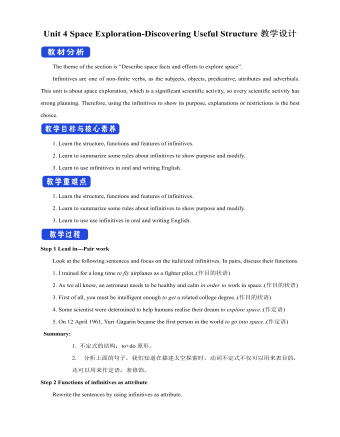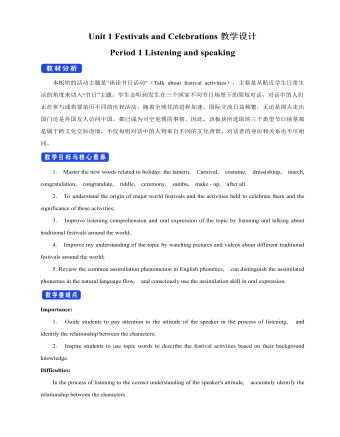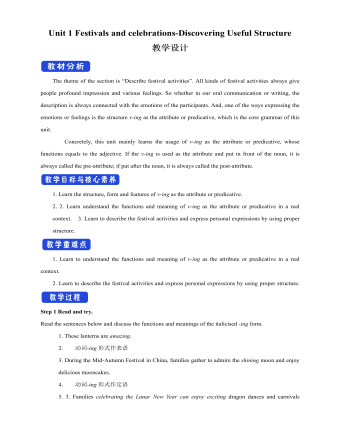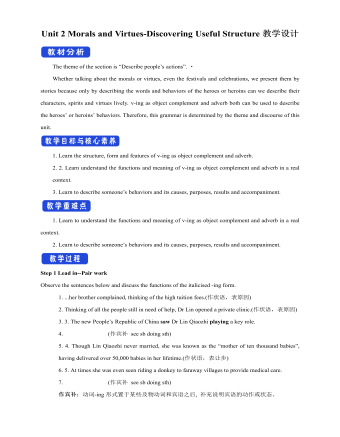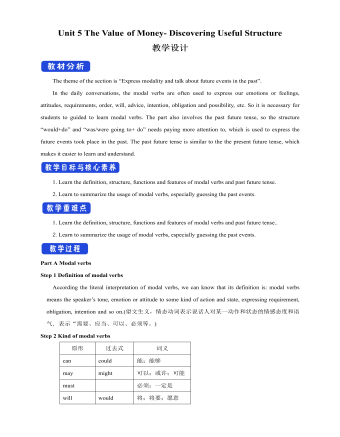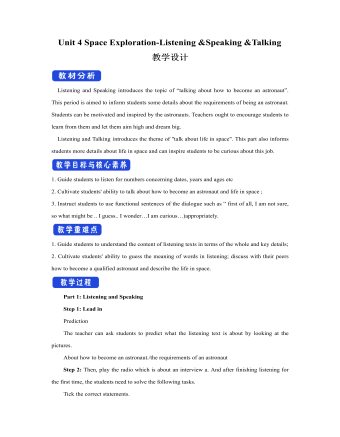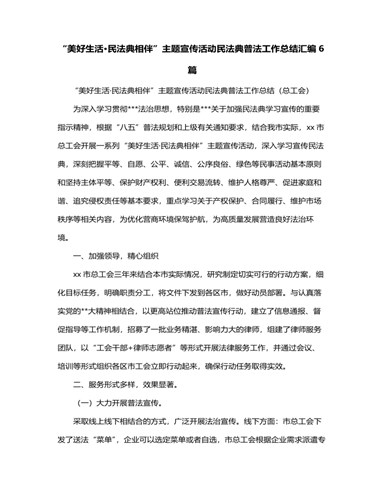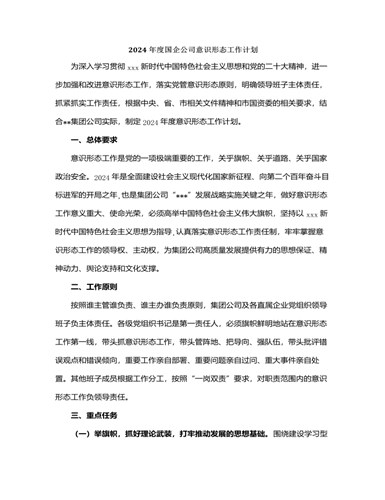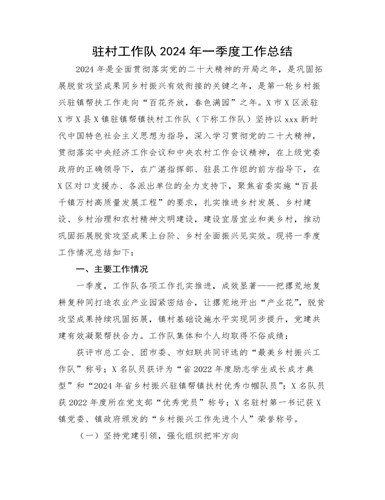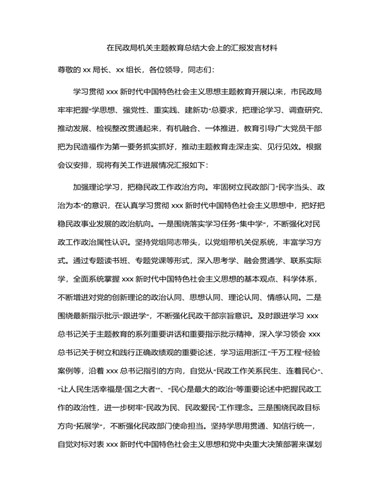新人教版高中英语必修3Unit 4 Space Exploration-Discovering Useful Structure教学设计 (订稿版)
Word格式/内容可修改





Summary: 动词不定式用作定语, 放在被修饰的名词后面。1. 动词不定式作定语常放在名词或不定代词后面作后置定语, 表示尚未发生的动作。We have much homework to do tonight. 2. 名词前有first, last, next, only等词以及最高级修饰时, 其后要用动词不定式。She was the first woman to win the gold medal in the Olympic Games.3. 抽象名词attempt, ability, chance, desire, determination, decision, plan, way或不定代词something, nothing等后面常用不定式作后置定语。Janis Adkins has the ability and desire to do useful work. 4. 当名词与定语之间存在动宾关系时。She is a nice person to work with.5. 当名词与定语之间存在主谓关系时。We must find a person to do the job.6. 当名词与定语有同位关系时。We got the order to leave the city. Step 3 Practice(1) The airport ______________(complete) next year will help promote tourism in this area. (2) Do you have anything _____(do) tonight? (3) The best way __________(improve) your English is to join an English club. (4) Miss Liu is a very nice person__________(work) with. (5) China is the third country in the world__________(send) men into space. (6) Mary had great determination _____________(achieve) her goal.(7) The German girl has the ability ___________(learn) Chinese well.(8) I have something important __________(tell) you.Answers: (1)to complete (2)to do (3)to improve (4)to work (5)to send (6)to achieve (7)to learn (8)to tell
转载请注明出处!本文地址:
https://www.mikeppt.com/wd/20230924135913177.html- 软件:Office 2016及以上版本
- 格式:docx
- 文件大小:80.92KB
- 页数:5
- 编号:20230924135913177
- 售价:5 金币 / 会员免费
- 上传时间:2023-09-24
- 上传者:尹超工作室
- 肖像权:人物画像及字体仅供参考
-
新人教版高中英语必修3Unit 4 Space Exploration-Discovering Useful Structure教学设计 (订稿版)
教育教学模板 | 页数:5 -
新人教版高中英语必修3Unit 1 Festivals and Celebrations教学设计一(订稿版)
教育教学模板 | 页数:7 -
新人教版高中英语必修3Unit 3 Diverse Cultures-Discovering Useful Structure教学设计(比赛版)
教育教学模板 | 页数:5 -
新人教版高中英语必修3Unit 1 Festivals and celebrations-Discovering Useful Structure教学设计(定制版)
教育教学模板 | 页数:3 -
新人教版高中英语必修3Unit 2 Morals and Virtues-Discovering Useful Structure教学设计 (精品版)
教育教学模板 | 页数:4 -
新人教版高中英语必修3Unit 5 The Value of Money- Discovering Useful Structure教学设计(定制版)
教育教学模板 | 页数:9 -
新人教版高中英语必修3Unit 4 Space Exploration-Listening&Speaking&Talking教学设计一 (精美版)
教育教学模板 | 页数:4
